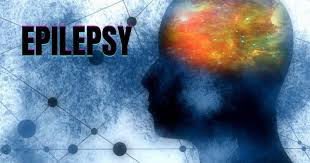Epilepsy is characterized by recurrent unprovoked seizures that are not associated with another medical condition. Seizures are episodes in which abnormal electrical activity in the brain causes changes in behavior, sensations, movements, or emotions. Most people with epilepsy have more than one type of seizure in their lifetime. Epilepsy is a condition characterized by the tendency to have recurrent seizures. The word comes from the Greek Epilepsia, “to be seized,” and it was originally used to describe any form of seizure. In recent years, it has been restricted to refer only to recurrent seizures.
Causes of epilepsy
A seizure occurs when there is an abnormal, excessive, or hypersynchronous neuronal activity in the brain. Seizures are brief disturbances in normal brain functioning, during which your body may shake, vibrate, jerk, or temporarily lose control over its muscles. The frequency of epileptic attacks can vary, but most often is unpredictable. Seizures vary from person to person, and each attack may be unique.
Symptoms of epilepsy
Before seizures, symptoms such as loss of coordination or lack of sense of time (delayed events), disorientation, loss of consciousness, or convulsions could also be seen. Seizures occur when the electrical activity controlling your brain changes. It’s important to remember that not all seizures are caused by epilepsy: there are other disorders and conditions, such as fainting and stroke, which cause seizures.
Types of Symptoms of Epilepsy
1. Focal seizures
A focal seizure (also known as a simple partial seizure) is when a group of neurons in one particular part of the brain begin to fire out of control. Focal seizures are often preceded by simple partial seizures. These seizures generally occur in childhood and may disappear later in life. A focal seizure is a type of generalized seizure that affects only one part of the brain. Focal seizures can be simple or complex and often affect movement and sensation, but some people may lose awareness during a focal seizure. focal and generalized. Focal epilepsy is further classified into simple or complex partial seizures. Simple partial seizures always begin with a disturbance in awareness, followed by motor, sensory, autonomic, or psychic symptoms. Complex partial seizures may begin with a disturbance in awareness but often have additional motor, sensory or psychic symptoms. Generalized tonic-clonic seizures are characterized by stiffening of the muscles, loss of consciousness, and a fall to the ground.
2. Sensory (visual or auditory) seizures
The term sensory seizure refers to complex partial seizures that are accompanied by an abnormal sensation or perception (aura). Sensory seizures can be auditory, visual, gustatory (related to taste), olfactory (related to smell), somatosensory (relating to the sense of touch), or even emotional in nature. Sensory (visual or auditory) seizures are a minor form of epilepsy. They result in an altered state of consciousness, which often presents itself as the feeling that one is watching scenes unfold from their own eyes, or hearing conversations through speakers.
3. “Generalized seizures” (significantly disrupting your life)
This is caused by abnormal electrical activity in the brain. There are many different types of generalized seizures, named for where in the brain they start. It is the most common type of seizure. They start on both sides of your brain at once. Generalized seizures can affect any part of your body, but they don’t cause you to lose consciousness, fall down, or have muscle twitches.
Types of Epilepsy
There are three general types of epilepsy: idiopathic, symptomatic, and cryptogenic. Symptoms of symptomatic and cryptogenic epilepsy include convulsions, tonic-clonic seizures, and behaviors, while idiopathic epilepsy typically causes other symptoms besides convulsions.
1. Idiopathic Epilepsy
Idiopathic epilepsy is characterized by recurrent seizures that occur without an identified cause. These seizures may be related to other conditions such as stroke or brain tumors, but not all cases of idiopathic epilepsy are associated with another medical condition. Idiopathic epilepsy refers to seizures that are not caused by any detectable abnormality in the brain.
2. Symptomatic Epilepsy
Symptomatic epilepsy occurs when seizures occur as a result of an identifiable medical condition that can be treated. The seizures are often preceded by an aura, which is an unusual sensation experienced before the onset of a seizure. An aura can be any abnormal sensation or feeling, such as seeing spots before your eyes, hearing strange noises, experiencing nausea, or smelling something bad. Symptomatic epilepsy is a type of epilepsy in which seizures are the prominent symptom. Two types of symptomatic epilepsy include partial complex and generalized tonic-clonic, also known as grand mal seizures.
3. Cryptogenic Epilepsy
Cryptogenic Epilepsy is a common form of epilepsy that is due to an unknown cause. It can be diagnosed in most cases with simple blood tests and imaging scans, though it can take several years for a diagnosis to be made due to the lack of obvious symptoms. The disease does not respond well to medication and usually affects people with severe brain injuries or those who have suffered from head trauma in their past. Cryptogenic epilepsy is a broad term used to describe the group of patients with newly diagnosed epilepsy whose seizures cannot be attributed to an identified structural or metabolic cause.
Treatment for epilepsy
These days, there are plenty of anti-epileptic drugs on the market to help control seizures. But finding the right drug for a particular case can be challenging. There are several different types of epilepsy and each person responds differently to a treatment. Some people may even need treatment that combines more than one medication type. For over 4,000 years, people have treated the symptoms of epilepsy with a variety of different substances. While this practice may seem like it would be ineffective and short-lived, some treatments for epilepsy actually provide long-term relief from seizures. Antiepileptic medications are the most common treatment for epilepsy. The first anticonvulsant used to treat epilepsy was phenobarbital, which is still in use today as a second-line agent.
Prevention of Epilepsy
The main goal of epilepsy treatment is to prevent seizures. This requires keeping good control of the level of the excitatory neurotransmitters such as glutamate and aspartate in the brain so that they stay away from triggering generalized tonic-clonic seizures. Treatment with antiepileptic drugs (AEDs) represents one of the main methods for achieving this goal. Also, some alternative medications and dietary modifications may reduce seizure frequency.
Are there any cures for epilepsy
You cannot cure epilepsy because there is no known cure for this disease. However, there are some treatments and medications which help to control the symptoms of seizures and reduce them so you can lead a normal life.
Who can be affected by epilepsy
Many people can be affected by epilepsy. Some of these people are students, drivers, pilots, or employees that have to interact with the public. Epilepsy is not something that should keep you from doing what you want to do. Some celebrities were diagnosed with epilepsy and they still managed to live their lives as normally as possible. If you suffer from this condition, don’t let it stop you from having fun in life!
In conclusion
Epilepsy is a serious disorder that can have a significant impact on your quality of life if left untreated. Epilepsy is a chronic condition, and it’s important to be aware of the risks and warning signs. To help you better understand epilepsy, we’ve provided you with some simple guidelines that should help make managing this condition easier for both parents and kids. With proper treatment and comprehensive care, the vast majority of people with epilepsy can live a normal life.








